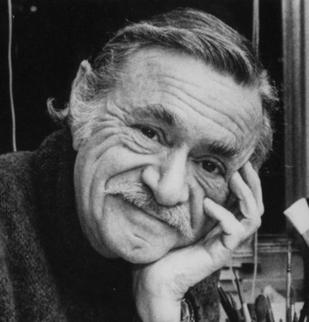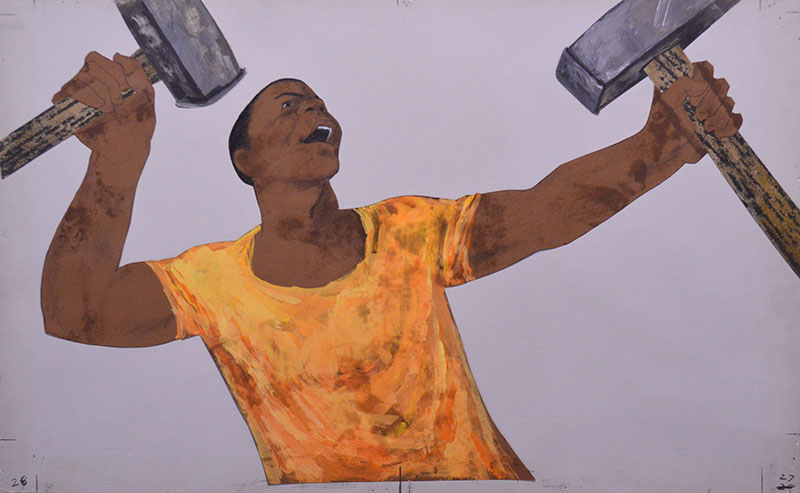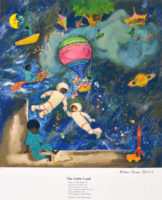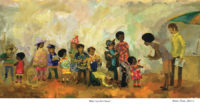From Caldecott to Coretta Scott:
 Ezra Jack Keats
Ezra Jack Keats
Ezra Jack Keats was born Jacob Ezra Katz in 1916 to immigrant parents in New York. He displayed a talent for painting as early as age 8, when he was hired to paint signs for a local store in his East New York neighborhood.
By the time of his death in 1983, Keats had illustrated over 80 books and written another 22, including the six-book series that follows Peter, the red snowsuit-hoodie-clad protagonist of The Snowy Day.
The Snowy Day remains a cultural touchstone. It was the first picture book where Black children could see a protagonist that looked like them. When The Snowy Day first came out in 1962, there were virtually no children’s books with a Black main character. Up to that point, if there were people of color in a children’s book, they were either relegated to the background or used to reinforce negative stereotypes. The Snowy Day is the most checked out book in The New York Public Library’s 125-year history (followed by The Cat in the Hat, 1984, Where the Wild Things Are and To Kill a Mockingbird).
As Keats would say when asked why he chose an African-American boy: “My book would have him there simply because he should have been there all along.”
Michelle Obama: once I had kids of my own, I liked to find stories with characters who looked like my girls — but at the same time the stories didn’t have to be centered on race. One of our favorites was “The Snowy Day,” by Ezra Jack Keats.
Whoopi Goldberg: When my daughter was little. The Snowy Day was the first book the librarian suggested. It became her favorite, and subsequently, with her own children, it became their favorite too.
Ezra Jack Keats Foundation Limited Edition Fine Art Prints
Michelson Galleries is proud to partner with the Ezra Jack Keats Foundation to offer these high-quality limited edition giclee prints. Proceeds help to support the Foundation, whose mission is to encourage and support the next generation of diverse authors and illustrators.
8.5×18.25 in
8.5×17.25 in
8.5×17.25 in
8.5×17.25 in
12.25×12 in
17.5×15 in
8.5×17.25 in
8.5×17.25 in
Ezra Jack Keats –John Henry
Very nearly the entirety of Ezra Jack Keats’ work for books is housed in the de Grummond Children’s Literature Collection on the campus of The University of Southern Mississippi. R. Michelson Galleries is proud to offer the only Keats’ final children’s book illustration original collage in private hands. This is the first time this important piece of children’s book history has been exhibited.
A contemporary of Ezra Jack Keats, Jerry Pinkney has written extensively about his appreciation of Keats’ for “opening the door” to Black illustrators. “Ezra opened the genre up, not only with A Snowy Day, but he did it later with The Legend of John Henry. What most people don’t realize is that, up until that time, the way that the legend of John Henry was interpreted outside of the African-American community was pretty stereotyped… I don’t think he saw himself as a particularly courageous man who was breaking down barriers. I think he was someone who was living a life of equality in terms of who his friends were and the people who were important to him — especially children.”

John Henry Picked Up Two Sledgehammers and Sang | 13×20.5 inches Gouache, Lithographic Crayon, and Collage on Illustration Board (Keats used lithographic crayon on paper rubbed over wood to get the texture of the handles) From the book John Henry







